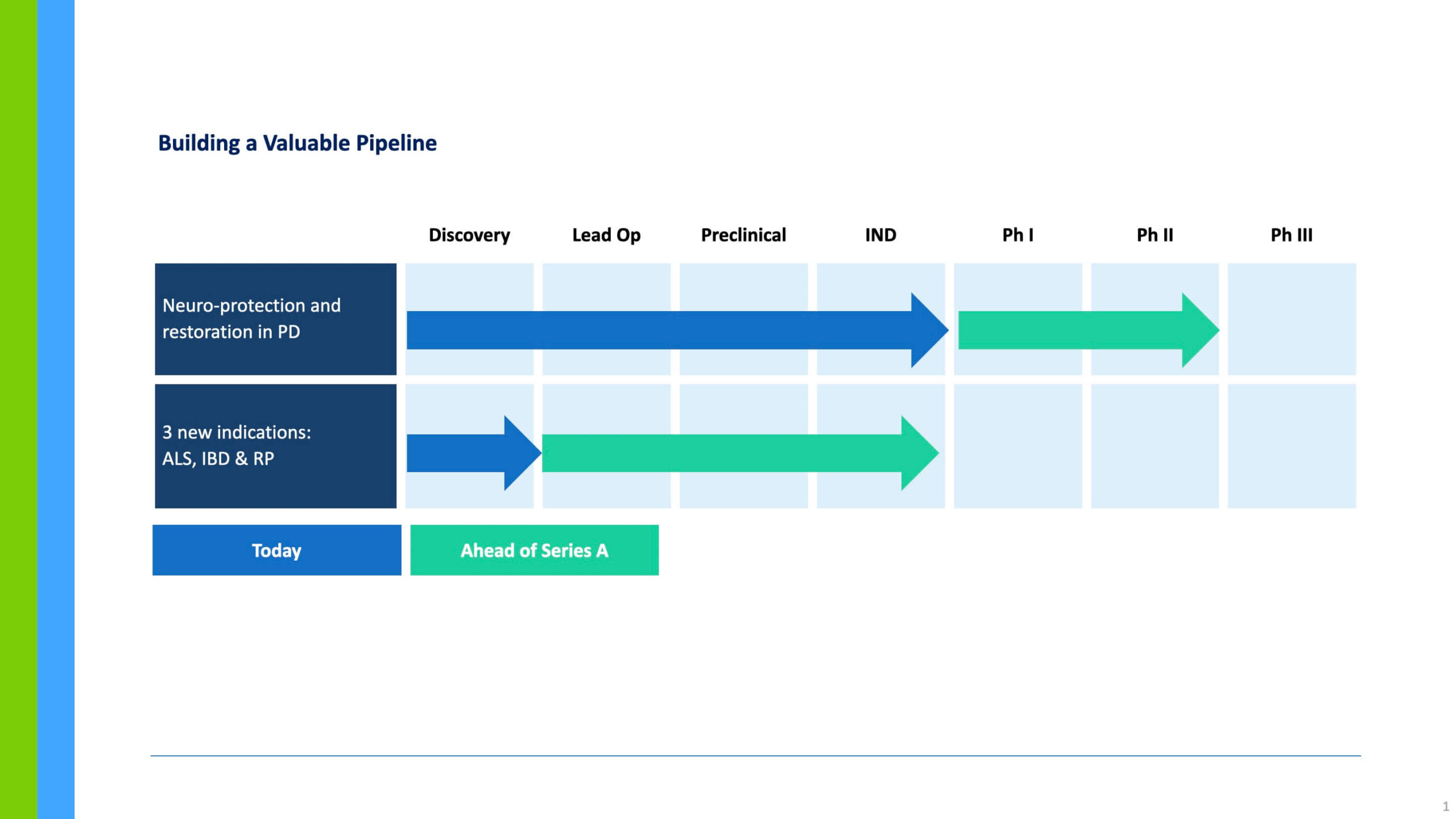Platform technology
Platform technology
The product that GeneCode develops is the first drug based on small molecule compounds that can rescue and restore dopamine neurons through targeting GDNF receprors GFRα1/RET. This presents an opportunity to be first in class with this type of neuroprotective and potentially neurorestorative treatment. Existing drugs are generic and have very similar treatment paths.
ALS, IBD, PD & RP affect all aspects of a patient’s life, including their mental health, ability to work and perform daily activities, independence, and autonomy. These devastating diseases increase the burden to both patients and society. GDNF has the potential to support the survival and maintenance of motor neurons in culture, and is significantly more efficacious than other trophic factors. Overexpressing GDNF in the muscle or motor cortex supports the survival of motor neurons; more prolonged maintenance of NMJ innervation alleviates motor functions and increases the life span of animals in different animal models of ALS.
The therapeutic benefits of GDNF have been extensively studied in the context of retinal disease. GDNF promotes the survival of photoreceptor and ganglionic cells. GDNF has been shown to promote the survival of retinal ganglion cells after injury. In the retinal degeneration (rd/rd) mouse model of human RP, GDNF significantly protected rod photoreceptor cells. AAV-mediated GDNF secretion from glial cells was effective in slowing down retinal degeneration in a rat model of RP. Recently, subretinal injection of hNPCs-GDNF has shown significant neuroprotection and enables the extended survival of photoreceptor cells in transplanted animal eyes.
GDNF is significantly expressed in the gastrointestinal tract with the highest concentration in intestine. GDNF are also expressed by smooth muscle cells and enterocytes. GDNF plays important role in the migration and maintenance of enteric neurons but also in regulating epithelia tight junction in the intestinal epithelial barrier (IEB) and protect intestinal cell invasion from bacterial infection. GDNF also act as anti-inflammatory effects in murine models of colitis. Recent findings indicate that GDNF was significantly reduced in IBD patients with CD and UC, indicating disease-relevant contribution to the development of IEB dysfunction. In addition, GDNF and its receptor knock-out mice die at birth, which have similar phenotype that includes defect in enteric nervous system, kidney, and loss of motor and sensory neurons. All this evidence indicates that GDNF receptors would be potential target for the treatment of IBD.
Although GDNF is a potential candidate for the treatment of ALS, IBD, PD and RP it does not have a drug-like profile. A small molecule with better pharmacokinetics and pharmacodynamics properties that can activate the GDNF receptor complex GFRα1/RET that triggers the same intracellular signaling cascades and induces similar neuroprotection, regeneration and maintenance of intestinal epithelial barrier as natural neurotrophic factors can be an alternative to GDNF.
Pipeline
